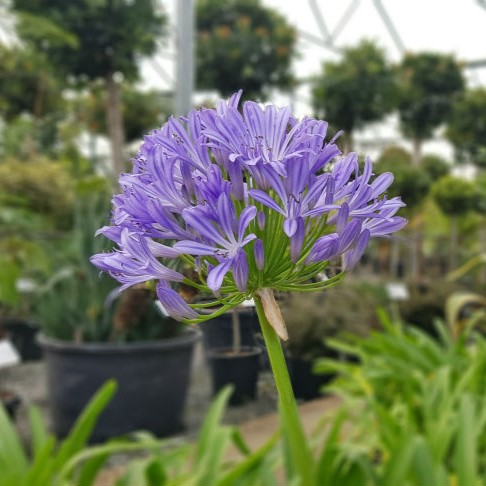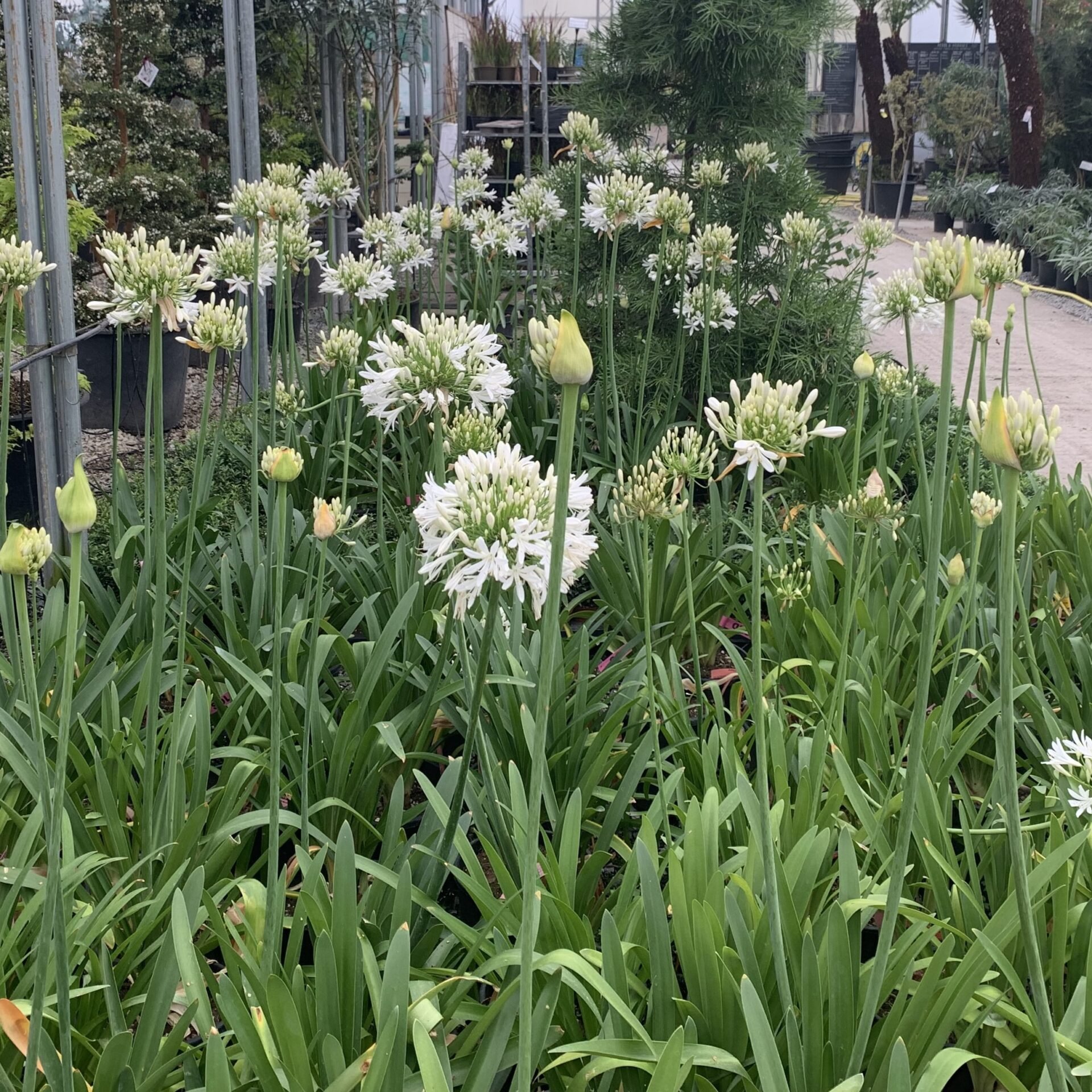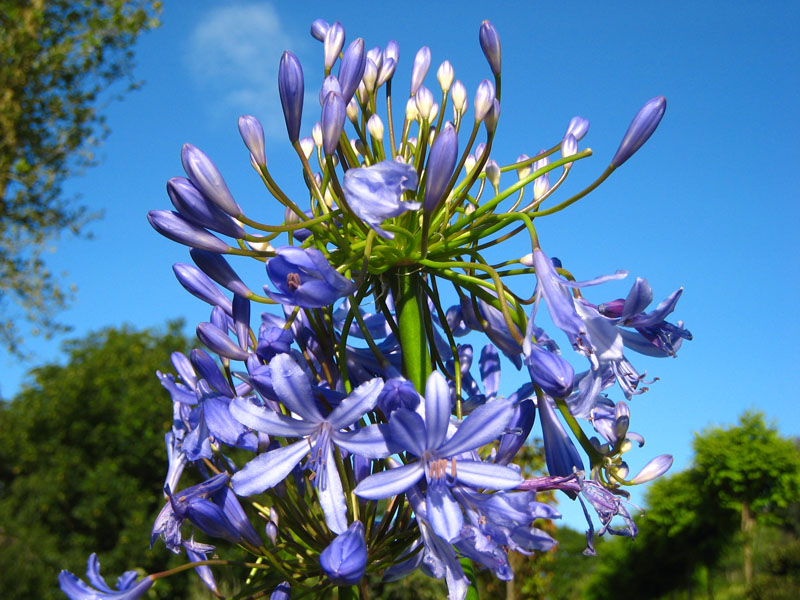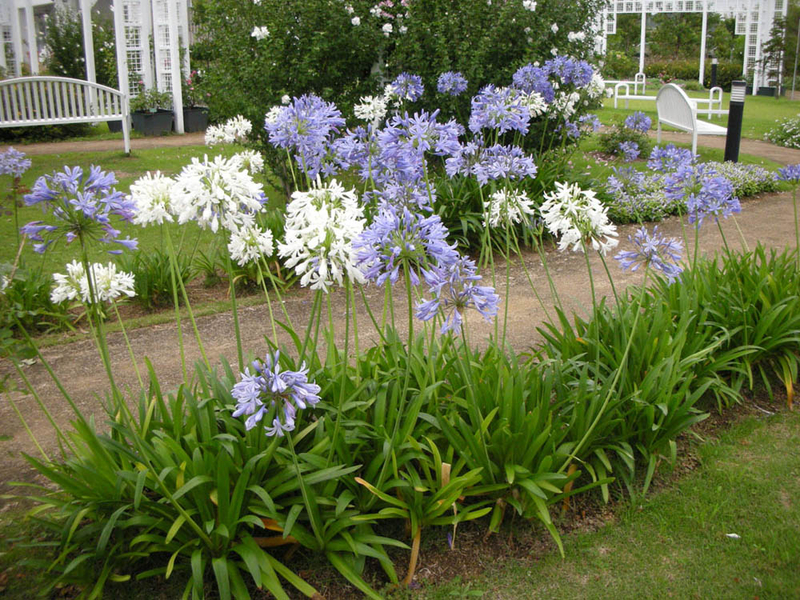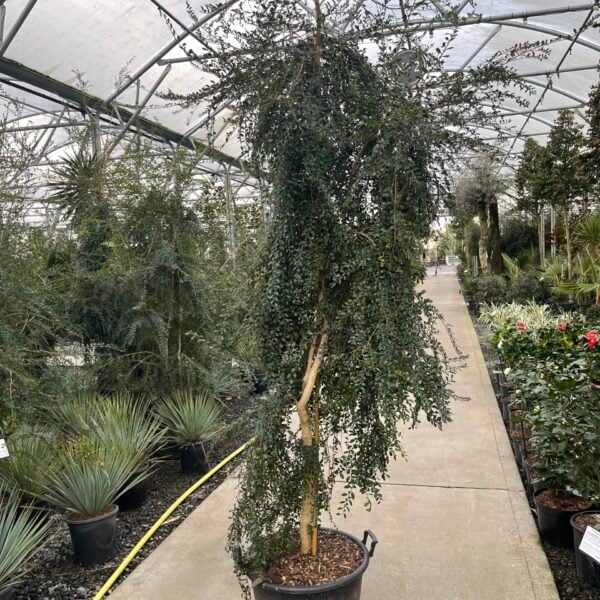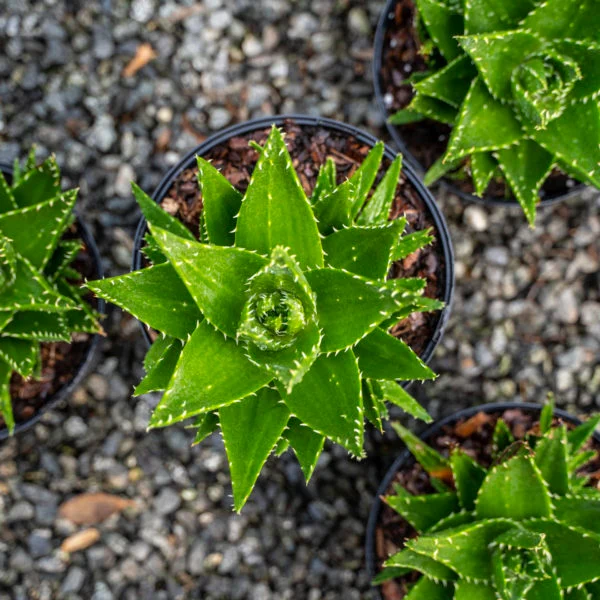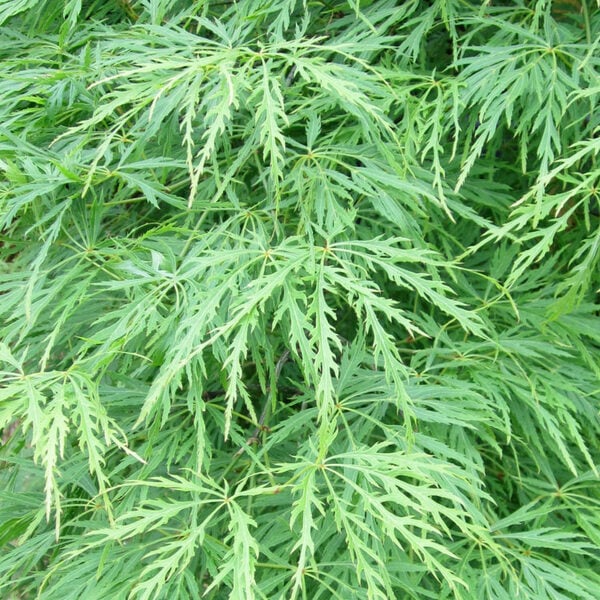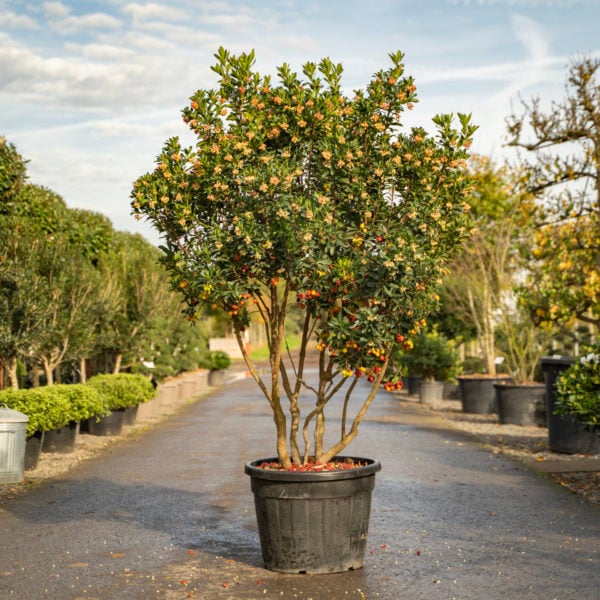Agapanthus africanus (African Lily)
Tender evergreen perennial with long, lush, strappy leaves forming clumps 1 to 2ft high. Huge blue or white flower heads on 4 to 5ft stems appear in mid summer. Please contact us for stock availability and sizes.

Hardiness level Red
This is the big evergreen one. The leaves can reach 2 - 3 ft but the flower stalks can reach 6ft. It's not as hardy as the lower growing ones but does well in a pot and can be wheeled into a shed or a greenhouse for the winter for some protection. In mild gardens (coastal and centre of very large cities) it can be left out - either in a container or in the ground permanently. If in a pot, select a tapered pot so it can be removed and put in a bigger pot or removed, halved and each half put in the same sized pot. This is one of the few plants we do mainly for the flowers. Not surprisingly - they're Architectural Flowers.
The stress of being in a pot will encourage them to flower - up to a point. They'll need potting on or dividing after a few years but they are terribly easy and magnificently impressive and seem little prone to disease. Tomorite (or any tomato food) is designed to encourage tomatoes (and therefore many other plants) to flower. Try it.
This plant is available with pure white flowers as well as blue.
It's tough (the flower stalks are surprisingly difficult to break) and good in the wind - especially near the coast and apart from winter protection in cold gardens, require little mollycoddling. They used to surround (self seeded) the heliport on the island of Tresco where, apart from occasional 100knot winds off the Atlantic they had to cope with several daily visits from a huge Sikorski S-61.
Native to western Cape Province in South Africa. Propagated by division.
A comparative comment on Agapanthuses : The big one (Agapanthus africanus) and the little ones (Agapanthus 'Blue Storm' and 'Snow Storm') cannot really be compared. It's tempting because they're both Agapanthuses and they both have green strappy leaves and either blue or white flowers but the big one stands alone and are so big that they can be used almost like topiary - a pair in pots either side of an entrance for example. There's no reason why you couldn't do the same with the smaller ones but the smaller ones really lend themselves to being planted in drifts - blue or white rivers wending their way through the garden. The point is, one's not comparing like with like.
Additional Information |
|
|---|---|
| Soil Type | |
| Light | |
| Plant Type | Big Leaves / Exotics, Evergreen, Flowers, Ground Cover, Semi Evergreen |
| Continent of Origin | |
| Specialist Plants | |
| Situation | Coastal, Mild City Gardens, Plants for Pots, Seaside, Sheltered Garden |
| Flower Colour | |
| Hardiness | |




